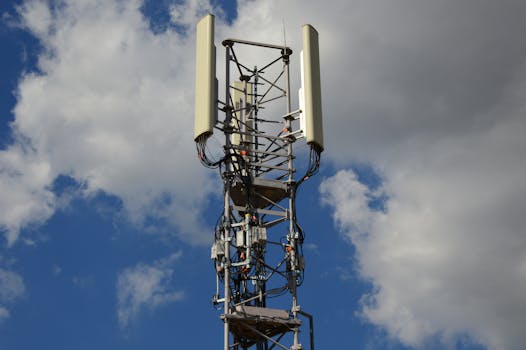5G Technology Advancements and Impact on Mobile Networks

5G Technology Advancements and Impact on Mobile Networks
5G technology has been making waves in the telecom industry, promising to transform the way we interact with mobile networks. With its unprecedented speeds, low latency, and greater connectivity, 5G is poised to revolutionize the mobile landscape. In this article, we will explore the advancements of 5G technology and its impact on mobile networks.
5G technology is the fifth generation of wireless technology, designed to provide faster data rates, lower latency, and greater connectivity than its predecessors. The key features of 5G include speeds of up to 20 Gbps, latency as low as 1 ms, and the ability to support a vast number of devices. These features make 5G an attractive proposition for a wide range of applications, from enhanced mobile broadband to mission-critical communications.
Advancements in 5G Technology
One of the significant advancements in 5G technology is the use of millimeter wave (mmWave) spectrum. mmWave spectrum offers a vast amount of bandwidth, allowing for faster data rates and lower latency. However, it also poses significant technical challenges, such as limited range and high attenuation. To overcome these challenges, 5G networks are using advanced technologies such as beamforming and massive MIMO (Multiple-Input Multiple-Output).
Another significant advancement in 5G technology is the use of network slicing. Network slicing allows multiple independent networks to run on top of a shared physical infrastructure, each with its own set of performance characteristics. This feature enables 5G networks to support a wide range of applications, from enhanced mobile broadband to ultra-reliable low-latency communications.
Impact of 5G on Mobile Networks
The impact of 5G on mobile networks is profound. With its faster speeds and lower latency, 5G is enabling a wide range of new applications and services. For example, 5G is enabling the widespread adoption of IoT (Internet of Things) devices, which require low latency and high connectivity. 5G is also enabling the development of new use cases such as enhanced mobile broadband, ultra-high-definition video streaming, and online gaming.
5G is also having a significant impact on the mobile network infrastructure. With the increasing demand for data and low latency, mobile network operators are having to upgrade their infrastructure to support 5G. This includes the deployment of new base stations, the upgrade of backhaul networks, and the implementation of new network architectures such as software-defined networking (SDN) and network functions virtualization (NFV).
Challenges and Opportunities
Despite the many advancements and benefits of 5G technology, there are also significant challenges and opportunities. One of the significant challenges is the cost of deploying 5G networks. The cost of deploying 5G networks is high, and mobile network operators are having to invest heavily in new infrastructure and technologies. Another challenge is the lack of standardization, which is hindering the development of 5G devices and applications.
However, there are also significant opportunities. 5G is enabling the development of new use cases and applications, which are creating new revenue streams for mobile network operators. 5G is also enabling the development of new industries and sectors, such as smart cities and industrial automation. With the increasing demand for data and low latency, 5G is poised to play a critical role in the development of these industries.
Conclusion
In conclusion, 5G technology is revolutionizing the mobile network landscape, offering unprecedented speeds, low latency, and greater connectivity. The advancements in 5G technology, such as the use of mmWave spectrum and network slicing, are enabling a wide range of new applications and services. However, there are also significant challenges and opportunities, and mobile network operators are having to invest heavily in new infrastructure and technologies to support 5G. As 5G continues to evolve and mature, it is poised to play a critical role in the development of new industries and sectors, and its impact on mobile networks will be profound.
